Avoid These 11 Common Indoor Cycling Mistakes
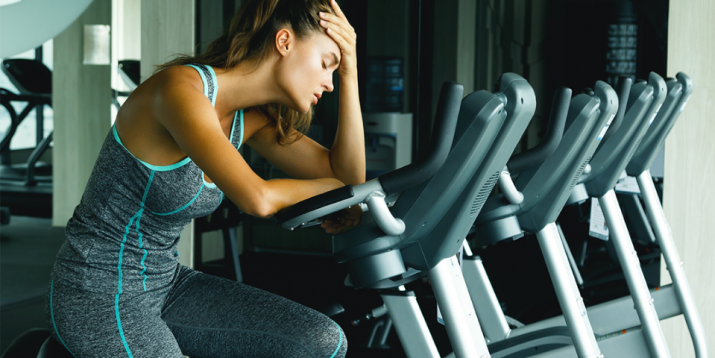
Indoor cycling isn’t as complicated a workout as, say, weightlifting or calisthenics — you’re seated, and there’s essentially one basic motion. So how much can go wrong?
Plenty. There’s significant room to make mistakes when cycling that can lead to an inefficient workout or, worse, injury. We asked fitness pros and cycling instructors about common indoor cycling mistakes and how to fix or avoid them.
1. Sitting Too High or Low
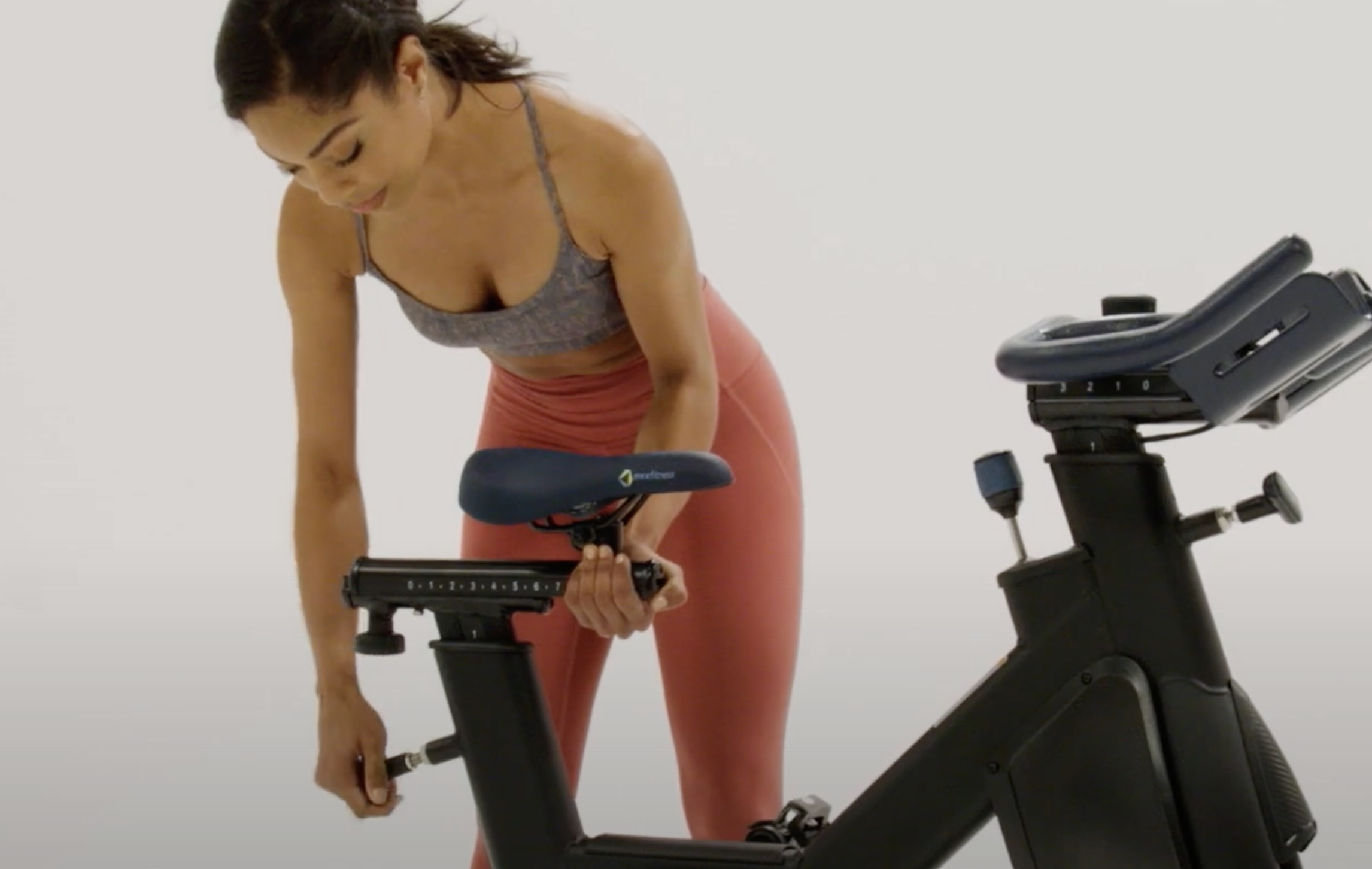
The first mistake many people make is not setting the bike up correctly, says Melanie Melillo, CPT.
“The most common mistake I’ve seen in the past decade of helping riders get set up is that they set the handlebars too high while the seat is too low,” says Jake Maulin, CPT, co-owner of CycleBar in Naples, Florida. “If your handlebars are too high, it makes the pedal stroke inefficient in the downward motion. If your handlebars are too low, it makes it difficult to breathe.”
Additionally, a seat that’s too high or low will put excess pressure on your spine and knees, says Brendan Kirk, PT, DPT, OCS, CSCS, CKTP, of Spine and Sports Medicine in Glen Rock, New Jersey.
To set up your bike correctly, stand next to it and use these guidelines:
- The seat should be about the height of your hip bone.
- Once seated, adjust the handlebars so you can hold them with a light grip while maintaining a slight bend in your elbows.
- You should be sitting far enough from the handlebars to maintain a long, neutral spine, says Melillo.
- At the bottom of your pedal stroke, your knee should be slightly bent. “This will allow you to generate more force safely,” says Kirk. But don’t let your knee bend too much — that will leave the pedal stroke “short” or unfinished, says Maulin.
2. Riding Tense
Another common mistake is gripping the handlebars too tight. “We call it the death grip or the white knuckle,” says Melillo. “That traps a lot of tension in your hands that you don’t need.” Many riders also hold tension in their jaw and let their shoulders ride up toward their ears.
Instead, follow these cues to loosen up:
- Relax your fingertips and hold the handlebars with a light grip.
- Make sure your shoulders are relaxed.
- Maintain a soft bend in your elbows and turn them inward, so they’re on either side of your rib cage, “as opposed to flaring out like chicken wings,” says Melillo.
Why? To get a good cycling workout, you need to allow your body to generate the most power that it can. “If your shoulders are up by your ears and your elbows are out to the side, you’re not in an optimal position to get the most pedal stroke,” Melillo says.
3. Uneven Foot Positioning
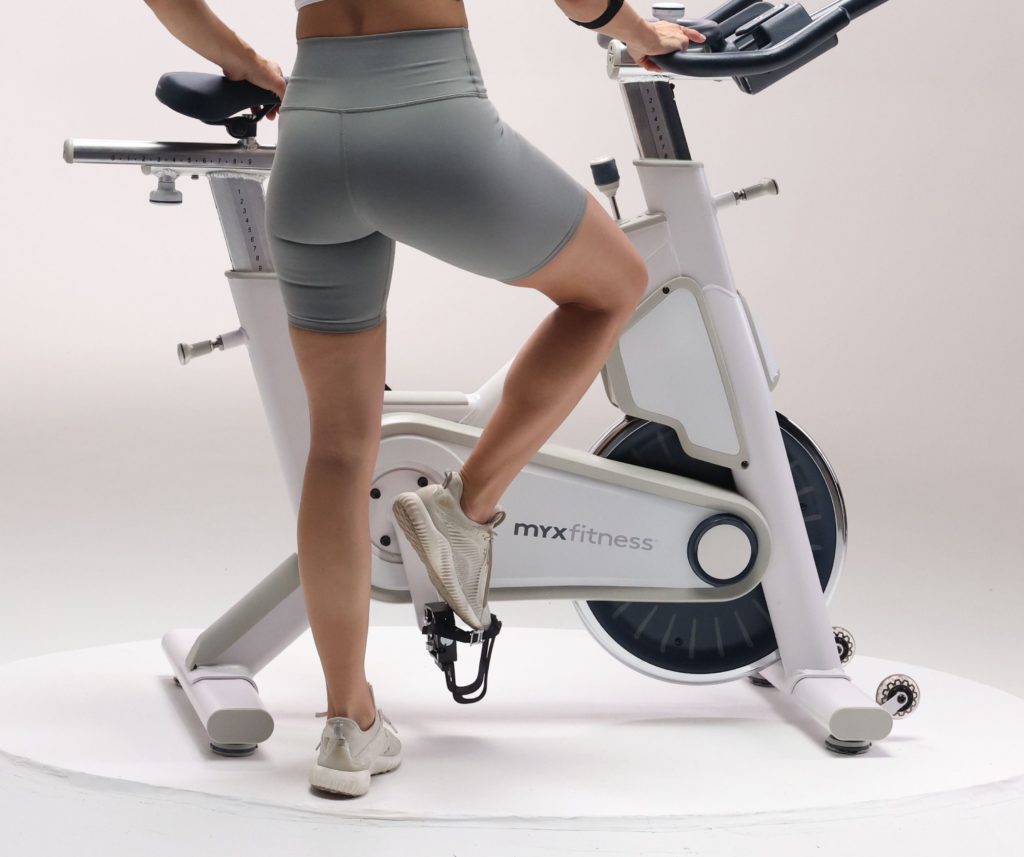
When you’re cycling indoors, your foot may be held in place by a toe cage or clipped shoes. This allows the hamstring muscles to activate when you pull your leg up, explains Andrea Metcalf, CPT, LREA, a certified personal trainer and author of the book Naked Fitness.
If your foot is pointing downward, you’re working your calves but giving the hamstrings short shrift. Instead, hold your foot level in the pedal. That will allow the quads and hamstrings to work together, producing a more balanced lower-body workout that activates the larger thigh muscles.
4. Setting the Resistance Too Low
“We see riders set the resistance too low, so they’re pedaling furiously but not getting any benefit out of the motion and even hyperextending their knees,” says Maulin. The fix: Create a light-to-moderate rate of resistance as a starting point, so you feel in control of the ride, not like you’re about to rock off the bike.
5. Not Fueling or Hydrating Enough
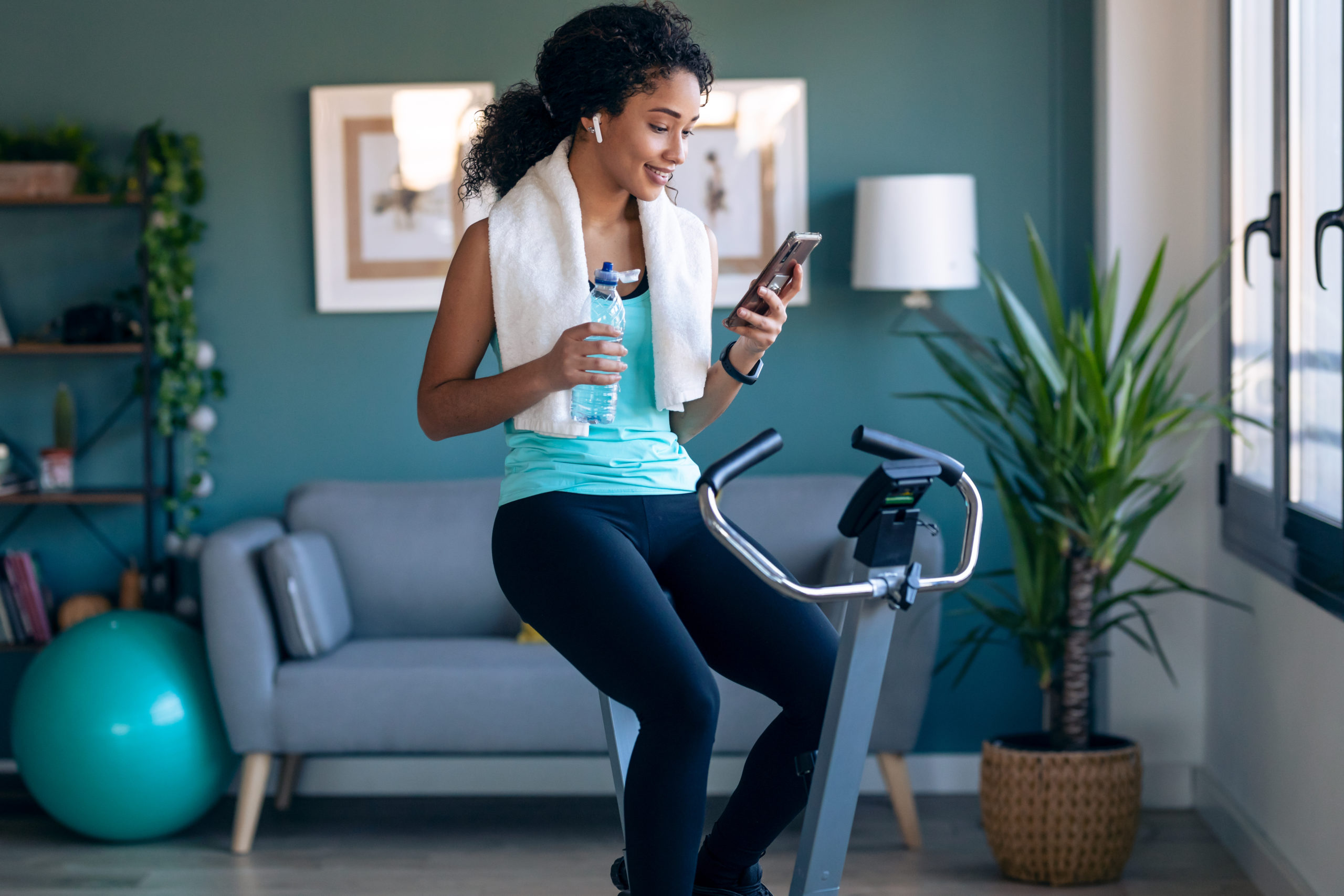
When you’re doing a cycling workout, it’s a good idea to have a water bottle within arm’s reach.
“Cardio like indoor cycling can be really sweaty, so you want to make sure you replace the fluids you lose — and electrolytes if you’re riding for more than 45 minutes,” says Melillo. A hydration supplement like Beachbody Performance Hydrate can help you rehydrate, replenish important electrolytes, and even improve endurance during your rides.*
And be sure to fuel properly pre– and post-workout with enough protein and carbs to support your activity level and fitness goals.
6. Incorporating Upper-Body Exercises
Trying to work out your upper body while riding a stationary bike is dangerous and “has little to no benefits,” says Garret Seacat, CSCS, head coach with Absolute Endurance in Manhattan, Kansas. “When you’re bobbing up and down on a bike doing any kind of upper body exercise while pedaling, you increase your chances of injuring your lower back dramatically.”
Upper body movements also detract from your effort on the pedals, making your workout less effective and decreasing calorie burn. Instead, do some push-ups as part of your post-ride stretch and cooldown.
7. Eating Back the Calories You Burned

“We have riders who are convinced that because they’ve torched hundreds of calories, they can indulge in pizza and all the sweet stuff your body craves immediately following the ride,” says Maulin. “A little treat is fine, but what your body needs post-workout is protein and hydration. Immediately consuming alcohol can also cancel out many of the good aspects of your workout.”
8. Cycling Too Hard, Too Often
Doing too many workouts, constantly exercising at full intensity, and not giving your body enough time to rest and recover will undermine your efforts.
“Going all-out every single time you exercise, is a pitfall,” says Melillo. “Your body needs to work out in all different heart rate zones. It needs periods of rest and recovery. As much as it needs hard workouts, you need those moderate workouts that last a little bit longer.”
9. Narrowing Your Training
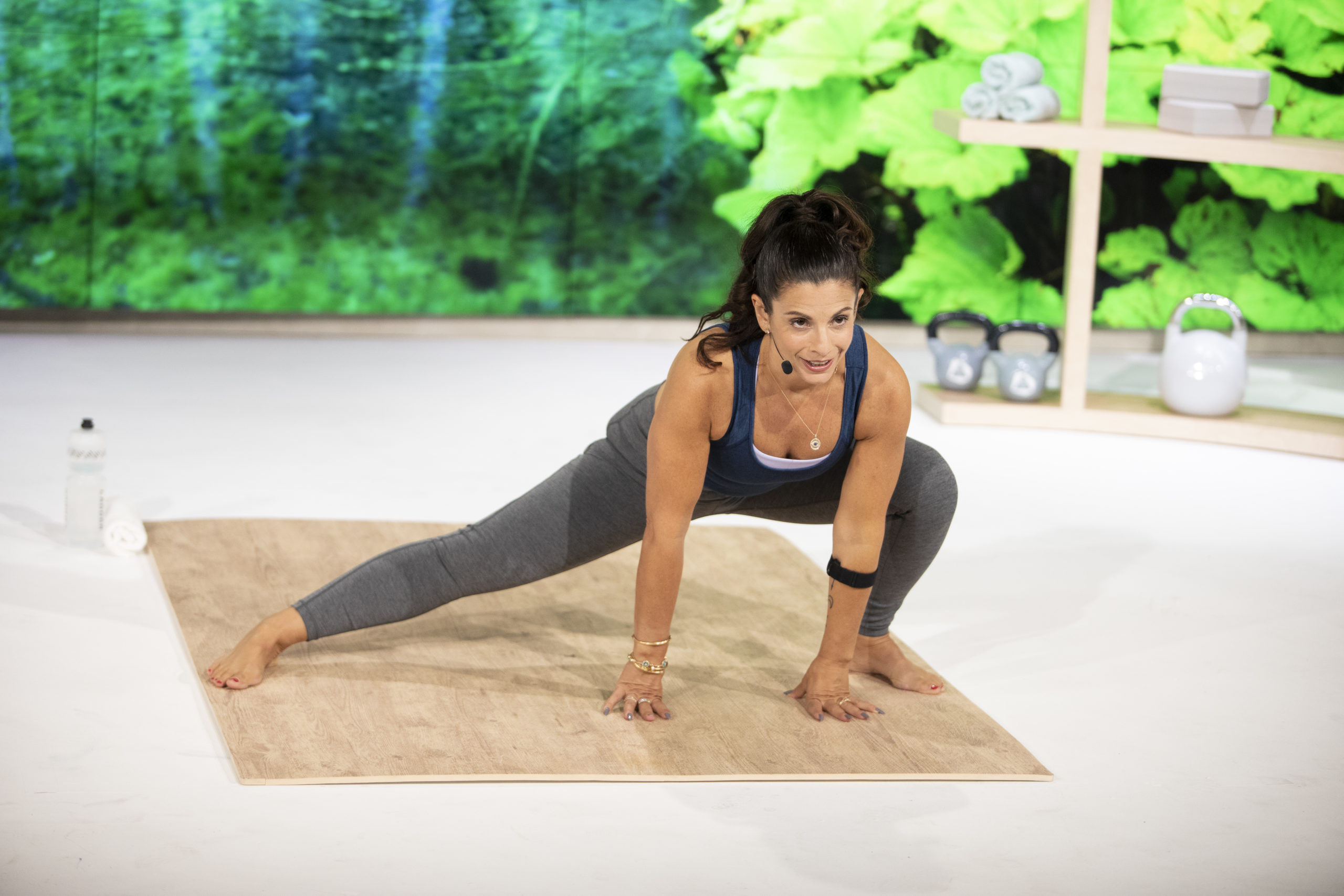
“Make sure you’re doing strength training, core training, and stretching as well as riding,” says Melillo. “All of that supports the best performance on the bike.”
Stretch for at least 10 minutes to warm up and cool down to prevent injury and minimize next-day soreness.
10. Trying to Keep Up With the Joneses
Cycling classes can be competitive, and that can make them fun and motivating. But getting carried away can cause injuries.
“I commonly see beginners trying to keep up with the person next to them in both resistance or speed, but a good resistance on the bike for one person may be too much for the person next to them,” says Andrew Blakey, CPT, director of Your Future Fitness in Toronto. “Listen to your body and pick a resistance that feels challenging but not so hard that you’re in pain. Choose a speed and resistance that is best for you, not the person next to you.”
11. Doing the Same Workouts
“Everybody might have a favorite class or trainer, but you benefit the most if you try all the different classes and all of the different trainers,” says Melillo. “You may learn something from one trainer that another trainer doesn’t say. And just because you hate those endurance rides or HIIT rides doesn’t mean they’re not important. Our bodies are sort of designed to find the shortcut, the most efficient way. So you want to keep challenging yourself with different physical and mental routines.”
*These statements have not been evaluated by the Food and Drug Administration. This product is not intended to diagnose, treat, cure, or prevent any disease.
